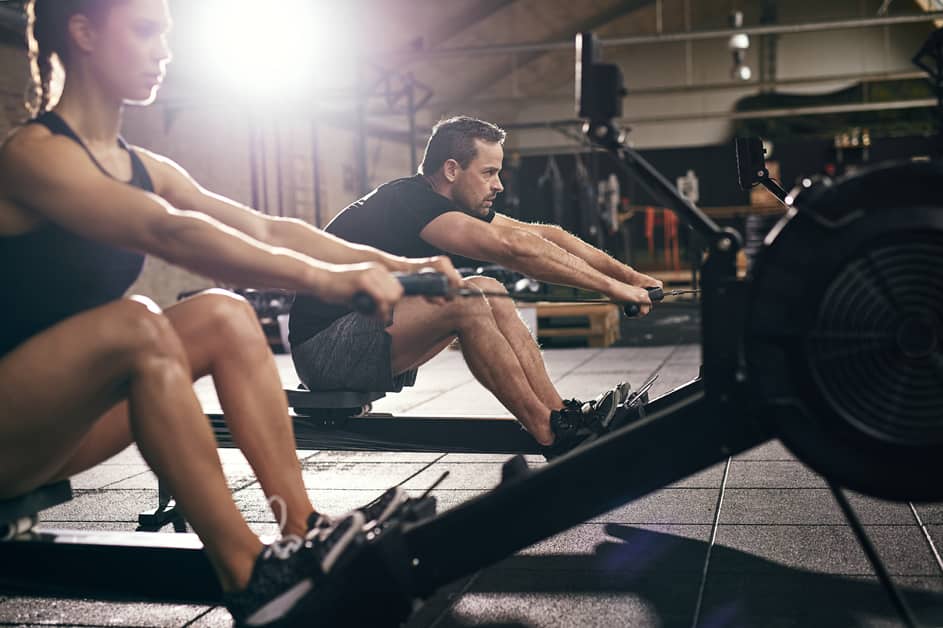Introduction
Hiking and trekking can be a great way to get physical exercise. But what if you suffer from knee pain? This article will talk about the importance of joint-friendly exercises. We’ll also discuss how to modify regular exercises to help protect your knees while you enjoy the outdoors. Whether you are a beginner or experienced hiker, these tips can help you hike and trek with knee pain.
What is joint-friendly exercise?
Joint-friendly exercise is any physical activity that preserves and keeps a joint working normally. It can help people with knee pain, as it strengthens muscles surrounding the knee joint and reduces pressure when walking. If you plan on activities like hiking or trekking, you need to strengthen the area.
Consult your doctor before beginning an exercise program to determine what’s best for you. Joint friendly exercises provide resistance to strengthen, but not overload. Start slowly and increase over time. The goal is to strengthen muscle groups and increase balance and stability around a joint.
Aquatic exercises, stretching, body-weight exercises, and core strengthening are all low impact activities that reduce pain and stiffness associated with knee pain. They also give your joints support for outdoor adventures like hiking or trekking at different levels:
- Aquatic exercises
- Stretching
- Body-weight exercises
- Core strengthening
Why is joint-friendly exercise important for hiking and trekking with knee pain?
Exercising with knee pain can seem daunting. Strengthening the muscles around the knee gives important support to the joints. This is especially important for hiking and trekking – needing extra strength, flexibility and stability. Exercises that target key supporting muscles can help reduce knee pain or avoid more damage while hiking and trekking.
Joint-friendly exercises have benefits. They lighten the load on the joint, give greater stability during movements, reduce stress over time and build strong muscles around the joint without pain. Examples include:
- Low impact aerobic activities
- Stretching movements
- Bodyweight exercises
- Dynamic warm ups
- Balance-focused activities
The goal of each activity should be mobility, not just movement. Exploring range of motion, finding alignment with each step taken, having a stable core and breathing patterns when possible. Doing these exercises 1-3 times per week can help hikers/trekkers with chronic knee pain both on and off trails.
Joint-Friendly Exercises for Hiking and Trekking
Hiking or trekking with knee pain? It can be tough! But don’t worry. You can make it much more tolerable and enjoyable with the right joint-friendly exercises. These will help strengthen your joints, enhance your mobility and reduce the risk of injuries. So, let’s take a look at these exercises that can be helpful when hiking or trekking with knee pain:
Squats
Squats are a great exercise that hikers and trekkers can both enjoy! It helps with muscle firing, balance, and strength in your legs, hips, and ankles. Additionally, it can reduce knee pain.
To do squats, stand with your feet shoulder-width apart. Imagine sitting in a chair, and make sure your knees don’t go beyond your toes. Squat down as low as you can, keeping your back straight and core engaged. Your thighs should be parallel to the floor, or even lower if possible. Engage all your major muscles, such as quads, hamstrings, glutes, and calf muscles. To complete the move, push through your heels until you’re standing again.
Do 8-10 reps per leg for one set. Take a 10 second break, then increase sets and reps based on how comfortable you feel.
Lunges
Lunges are great for hikers and trekkers with knee pain. They strengthen the thighs, glutes and core. And when done right, they help protect joints. It’s best to talk to a doctor or physical therapist first. They can decide which type of lunge is best for you.
The three main types of lunges:
- Forward/Walking Lunges: Step forward with one foot. Keep your front heel on the ground and tension out of your back knee.
- Reverse Lunges: Stand with both feet together. Step back with one leg until you reach a 90 degree angle.
- Side Lunges: Hold up on one leg. Step sideways from left to right with small, controlled movements. This will boost flexibility.
By doing these exercises prior to trekking, hikers and trekkers can reduce injuries. Plus, they can protect their knees from pain and damage. This way, they can spend more time in nature!
Step-Ups
Step-ups are an effective, low-impact exercise. Place one foot onto a bench, sturdy box, or step. Push up through the heel and glutes until the knee is straight. Step down with the same leg before repeating with the other. Keep posture erect and core engaged. Squeeze glutes as you come up to work those muscles more actively.
This exercise builds strength in both legs independently. This strengthens your hips, ankles, and helps with dynamic movements on uneven terrain. 8-15 reps per side in two sets is recommended. Make sure you have stable equipment when doing your step-ups. Protect your joints from injury with proper gear like knee braces or supports.
Glute Bridges
Glute Bridges are great for joint-health! This exercise activates and strengthens main muscles used in hiking and trekking, such as your glutes, hamstrings, core, and lower back. This can help support knee movement and reduce knee pain.
To do Glute Bridges:
- Lie on your back with your knees bent, feet flat on the floor/mat.
- Keep a neutral spine as you lift your hips to the ceiling.
- Squeeze your glutes.
- Hold for a few seconds, then lower hips slightly off the floor.
- Repeat 10-15 reps per side.
Take breaks when hiking/trekking to give joints a break. To get maximum benefit from each move, practice proper form and avoid further harm to a painful joint/muscle group.
Leg Lifts
Leg lifts are an exercise to strengthen muscles around your joints. Keep your core engaged to maintain good posture. You can do pulses or more advanced squats with the lifts. Increase difficulty by doing a cross-over step with each lift. Switch legs or cross over step with each repetition. No special equipment is needed – just open space and your body weight. Start slowly and strengthen up as your joints adjust.
Stretches
Stretching is essential for those who struggle with knee pain. It increases range of motion and flexibility, plus keeps muscles flexible and strong. Additionally, it reduces the chance of injury and pain while hiking or trekking.
This article will talk about helpful stretches for those who suffer from knee pain while out on the trails.
Hamstring Stretch
Do the hamstring stretch to help avoid knee pain before and after any hiking or trekking. Start by sitting on the ground with one leg straight and the other bent, with your foot close to your butt and the sole on the floor.
Straighten your back and reach forward with both arms until you feel a gentle stretch. Hold it for 30 seconds and then release. Do this two to three times on each side while breathing deeply. Don’t overdo it, or it can cause discomfort or injury.
Regularly performing hamstring stretches can improve flexibility, reduce muscle tightness in the lower back, and reduce inflammation that can lead to overuse injuries. With practice, you may find you experience less joint pain while doing activities like
- walking
- running
- climbing stairs
Calf Stretch
Calf stretching is an important exercise for hikers and trekkers with knee pain. The calf muscles affect the knee joint when we hike or trek. Therefore, stretching the calf regularly can help manage knee injuries and let hikers and trekkers keep going safely.
When doing a calf stretch, stand hip-width away from a wall or support. Put one foot behind you on the heel. Keep your toes facing forward until you feel a stretch in the calf. Engage your stomach muscles to protect your back. Reach forward with both hands or lean against the wall for balance. Don’t let your feet get closer than hip-width for best results. If you don’t feel a stretch after 10-15 seconds, press lightly against the support surface with your hand until you feel the tension. Hold for 15-30 seconds before switching legs and repeating.
Quadriceps Stretch
The Quadriceps Stretch is great for strengthening and toning the muscles around your knee. It also helps reduce pain when hiking or trekking.
To perform this stretch:
- Stand with feet hip-width apart. Raise one leg behind you.
- Grasp the ankle of the raised leg with the opposite hand and gently pull it towards your buttocks.
- Keep the thigh of the raised leg parallel to the ground. Feel a stretch in the front of your thigh.
- Hold for 30 seconds and repeat with the other leg.
- If standing causes too much stress, you can do this exercise while sitting on a chair. Hold onto the chair for balance. Make sure you relax tension from the knee joint.
- Do sets two or three times. Use light pressure when stretching to keep tension off inflamed joints or areas that cause discomfort.
Glute Stretch
The glute stretch is a joint-friendly exercise. It reduces stiffness in the hip and thigh area. It helps reduce knee pain, by reducing strain on the joints, and improving flexibility.
To do the stretch, lie on your back. Bend your knees at 90 degrees. Cross your arms in front. Put your feet flat on the floor. Gently raise your hips towards the ceiling. This will give you a mild, comfortable stretch in your glutes. Hold this for 30 seconds. Then lower yourself down, controlling the movement. Do this 3-4 times each side, if tightness persists. Or if you’ve been walking or hiking a lot.
This simple exercise can help loosen tight muscles around the knee joints. And reduce aches after long walks, or long periods of sitting or standing. As with all exercises, take caution. But also remember gentle stretching can help improve mobility, and reduce pain from poor posture or tight muscles.
Tips for Hiking and Trekking with Knee Pain
Knee pain can make hiking and trekking seem daunting. But, with the right exercises, you can still enjoy the experience. Low-impact cardio, Pilates, and yoga are great joint-friendly ways to exercise. They can help reduce pain and better protect your knee joint.
This article will explore exercises you can do before and after a hike or trek, to help manage knee pain:
Wear the right shoes
Knee pain can be a real drag when hiking or trekking. It’s key to wear the right type of shoes. Cushioning and arch supports are musts. Plus, the shoes should be fitted well. Buy comfy shoes with plenty of support and grip. When wearing them, make sure each foot gets even weight distribution. This helps reduce joint pressures and relieve knee pain.
Use a walking stick
Using a walking stick for hiking and trekking isn’t just about fashion! It can have health benefits too. Studies show that walking sticks can reduce the force on knee joints, and therefore reduce pain connected to knee issues. Plus, walking sticks offer balance for rough and uneven terrain.
Prevention is key!
When selecting a walking stick, think about your needs. Taller walkers need longer sticks. For mixed or abrupt terrains, bigger grips on meatier sticks are best. After you choose one, adjust the length so it’s comfortable on your forearm and at your side when you’re standing. This will provide the best support and protection while trekking.
Take regular breaks
Take regular breaks when hiking or trekking with knee pain. Don’t push yourself too hard— it’s better to manage your body kindly than to break through temporary barriers. These breaks will help your body adjust to unexpected terrain changes and steepness, as well as extra weight in your backpack.
Further benefits of regular breaks include:
- Hydration
- Dispersing carbon dioxide from your legs
- Rejuvenating your relationship with the wind and surroundings
It’s also a great time to do light stretching exercises that will improve flexibility and strengthen joints. Doing wall slides before and after climbing hills can help prevent overextending muscles when descending. Also, walking on soft ground affected by heavy rain can help relax leg muscles strained by uneven terrain or stony climbs, which can help avoid over-extension or overstretching of ligaments in arched knees during descents.
Use a knee brace
A knee brace can be helpful in preventing or reducing knee pain while on a hike. It should fit comfortably, while still providing support and control. There are two options: off-the-shelf and custom-made.
A hardware knee brace is generally made with straps, hinges, and breathable material. It restricts the range of motion, so knee pain and instability are reduced.
Different braces are used for different activities. Compression sleeves are great for long hikes, as they increase circulation and relieve overuse symptoms. Hinged braces give more stability for short hikes or irregular terrain.
When selecting a brace, consider how it may affect your body. Consult medical advice before using one if you’re not sure.
Conclusion
Strengthening muscles around the knee can help with joint-friendly exercises for hiking and trekking. These include the quadriceps, hamstrings, glutes and hip abductors.
Dynamic flexibility exercises can improve lower extremities. This could help you feel more comfortable during long hikes or treks. Running drills can correct muscle imbalances that may cause pain or instability in the knees.
Focus on your form when walking, running or hiking. Keep your head up, body upright and knees in line with your toes. Push off with each step.
Consistent practice with these exercises will reduce discomfort. It will also help you move confidently outdoors while you explore nature!
Frequently Asked Questions
Q: What types of exercises can I do to reduce knee pain while trekking and hiking?
A: Joint-friendly exercises such as swimming, biking, and low-impact cardio can help reduce knee pain while trekking and hiking. Strength training exercises such as squats, lunges, and calf raises are also important for building the muscles around the knee joint.
Q: What are the benefits of joint-friendly exercises for trekking and hiking with knee pain?
A: Joint-friendly exercises can help strengthen the muscles around the knee joint and reduce inflammation in the area. This can help reduce the pain associated with trekking and hiking with knee pain.
Q: What tips should I follow when doing joint-friendly exercises for trekking and hiking with knee pain?
A: When doing joint-friendly exercises, it is important to start slowly and increase the intensity over time. Make sure to warm up muscles before any exercise and stretch afterwards. It is also important to take regular breaks and to stop if any pain or discomfort is experienced.





